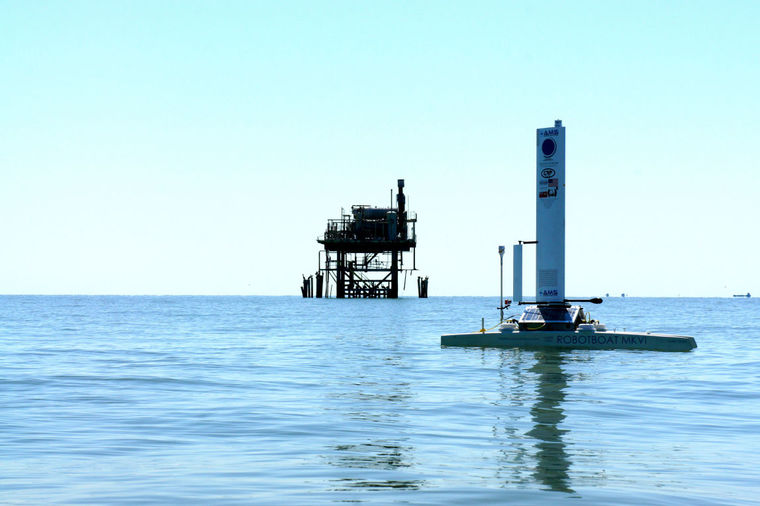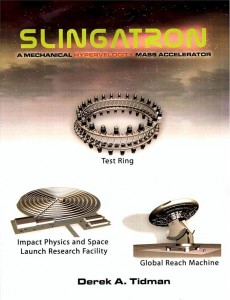Posted at 15:19h
in
Crowdfunding,
Energy
by Shen Ge
Introduction
[caption id="attachment_330" align="aligncenter" width="760"]

Datamaran, a surface robot, by Autonomous Marine Systems. Credit: Autonomous Marine Systems[/caption]
On June 18, 2015, I had the chance to talk with Eamon Carrig, the Chief Roboticist of the surface ocean drone startup
Autonomous Marine Systems. The CEO, TJ Edwards, and Eamon Carrig were friends at Princeton University and later both worked at Planetary Systems Corp., a spacecraft mechanisms company in Maryland. Due to a combination of interest in robotics and sailing as well as concerns about climate change which is directly indicated by ocean health, they built their first sailing robot in 2006. The company was incorporated in 2009 and after several years of work, the founders quit their jobs to focus full-time on AMS in late 2012. The primary motivation came from the emergence of company Liquid Robotics which TJ and Eamon saw to be much too expensive for the mass deployment. They decided their technology could do better at far lower cost.
In 2012, they launched a successful Kickstarter campaign where they raised over eighty thousand dollars to build a prototype. They underwent a 6 week training session through the National Science Foundation's Innovation Corps Program in Washington D.C. Later that year, they were accepted into the startup accelerator SURGE in Houston. Thanks to the mentorship and connections made through SURGE, they acquired funding to execute pilots and demonstrations.. When asked about the SURGE experience, Eamon had only positive things to say, "SURGE was awesome. Everyone there, from mentors to entrepreneurs, to the staff were top-notch."
 Datamaran, a surface robot, by Autonomous Marine Systems. Credit: Autonomous Marine Systems[/caption]
On June 18, 2015, I had the chance to talk with Eamon Carrig, the Chief Roboticist of the surface ocean drone startup Autonomous Marine Systems. The CEO, TJ Edwards, and Eamon Carrig were friends at Princeton University and later both worked at Planetary Systems Corp., a spacecraft mechanisms company in Maryland. Due to a combination of interest in robotics and sailing as well as concerns about climate change which is directly indicated by ocean health, they built their first sailing robot in 2006. The company was incorporated in 2009 and after several years of work, the founders quit their jobs to focus full-time on AMS in late 2012. The primary motivation came from the emergence of company Liquid Robotics which TJ and Eamon saw to be much too expensive for the mass deployment. They decided their technology could do better at far lower cost.
In 2012, they launched a successful Kickstarter campaign where they raised over eighty thousand dollars to build a prototype. They underwent a 6 week training session through the National Science Foundation's Innovation Corps Program in Washington D.C. Later that year, they were accepted into the startup accelerator SURGE in Houston. Thanks to the mentorship and connections made through SURGE, they acquired funding to execute pilots and demonstrations.. When asked about the SURGE experience, Eamon had only positive things to say, "SURGE was awesome. Everyone there, from mentors to entrepreneurs, to the staff were top-notch."
Datamaran, a surface robot, by Autonomous Marine Systems. Credit: Autonomous Marine Systems[/caption]
On June 18, 2015, I had the chance to talk with Eamon Carrig, the Chief Roboticist of the surface ocean drone startup Autonomous Marine Systems. The CEO, TJ Edwards, and Eamon Carrig were friends at Princeton University and later both worked at Planetary Systems Corp., a spacecraft mechanisms company in Maryland. Due to a combination of interest in robotics and sailing as well as concerns about climate change which is directly indicated by ocean health, they built their first sailing robot in 2006. The company was incorporated in 2009 and after several years of work, the founders quit their jobs to focus full-time on AMS in late 2012. The primary motivation came from the emergence of company Liquid Robotics which TJ and Eamon saw to be much too expensive for the mass deployment. They decided their technology could do better at far lower cost.
In 2012, they launched a successful Kickstarter campaign where they raised over eighty thousand dollars to build a prototype. They underwent a 6 week training session through the National Science Foundation's Innovation Corps Program in Washington D.C. Later that year, they were accepted into the startup accelerator SURGE in Houston. Thanks to the mentorship and connections made through SURGE, they acquired funding to execute pilots and demonstrations.. When asked about the SURGE experience, Eamon had only positive things to say, "SURGE was awesome. Everyone there, from mentors to entrepreneurs, to the staff were top-notch."



 The Mistbox Control Unit[/caption]
The Mistbox Control Unit[/caption]
